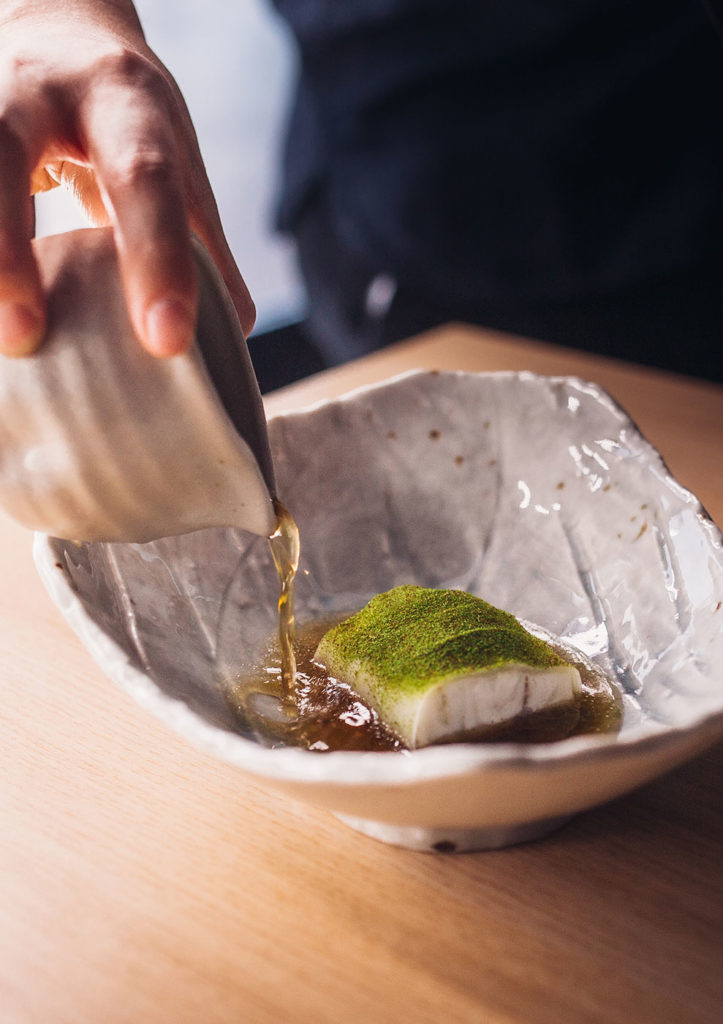
Kato’s Steamed Turbot
Yield: One family-sized portion for sharing
Growing up, Jon Yao’s mother often purchased live tilapia and steamed it at home. At some point, her preparation method changed, and instead of using a steamer, she began to prepare the whole fish in the microwave, cutting prep time down to five to seven minutes. After steaming, she added scallion and ginger to the fish, and then scorched it with hot oil. A soy sauce mixture was poured on top, mixing with the steaming liquid and aromatic oil, before garnishing the fish with cilantro.
Inspired by his mother’s preparation, but unable to serve each guest a whole fish, Yao adapted the fish into a recipe that became a classic at Kato’s original location. Unfortunately, the dish will no longer be available at the restaurant’s new location at The Row, but you’ll be able to make it at home courtesy of the Kato team.
Chef Jon Yao is featured on the fourth season of our Emmy-winning documentary series, The Migrant Kitchen. You can stream the full episode for free here.
Ingredients
Turbot
- 1 turbot, around three to four pounds
Turbot Bone Broth
- 45 g. turbot bones
- 300 g. water
- 5 g. ginger
- 70 g. sake
- 70 g. mirin
- 70 g. michiu
- 70 g. Shaoxing
- 3 g. usukuchi
- 5 g. fish sauce
- 15 g. dark Chinese soy sauce
- 5 g. shiro dashi
- 3 g. aged soy sauce
- 1.5 g. sugar
Ginger Scallion Relish
- 100 g. haché (minced) ginger
- 100 g. haché scallion
- 50 g. grapeseed oil
- 5 g. fish sauce
- 3 g. salt
Kohlrabi
- 1 kohlrabi
Scallion Powder
- 60 g. dehydrated scallion
- 20 g. salt
- 10 g. sugar
- 1 g. MSG
Missing ingredients? We got you.
Find and support independent producers, farmers and purveyors in your local area with our crowdsourced directory, Supply Home Cooks.
Method:
Turbot:
Filet turbot into four pieces and skin. Cure with a mixture 2:1 salt:sugar for 10 minutes. Rinse in cold water and dry well. Reserve.
Turbot Bone Broth:
Wash turbot bones three to five times or until completely clear. Boil bones for 10 to 15 minutes or until all flesh and residue are off. Steep bones with water and ginger until flavor is developed, for about one hour. Reduce sake, mirin, michiu and Shaoxing by half. Add to bone broth and season with usukuchi, fish sauce, dark Chinese soy sauce, shiro dashi, aged soy sauce and sugar. Keep warm.
Ginger Scallion Relish:
Mix haché ginger and scallion together and season with salt. Heat grapeseed oil to 450 degrees Fahrenheit and pour over haché ginger and scallion. Caution: this step is very dangerous and will splatter. After oil is poured, add fish sauce. Strain gently. Relish should be slightly oily and you should have a lot of leftover oil as well to reserve.
Kohlrabi:
Use a Japanese-style sheeter to sheet kohlrabi. Stack high and slice into one-by-six-inch ribbons.
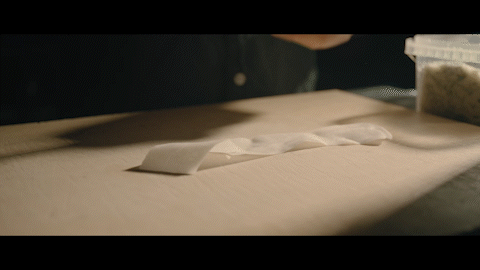
Scallion Powder:
Use a coffee grinder to grind the entire mixture until very fine-like powder.
To Assemble:
Cut turbot into a small rectangle and place a teaspoon of relish on top, or enough to blanket it.
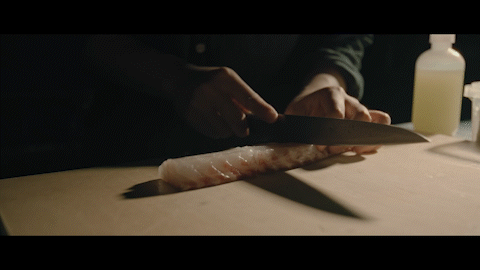
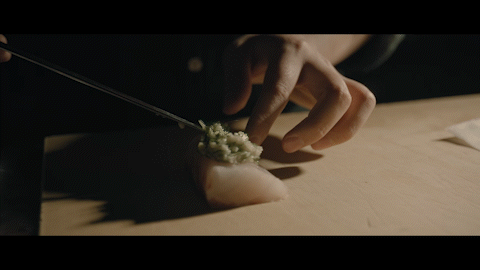
Wrap with four to six pieces of kohlrabi ribbon.
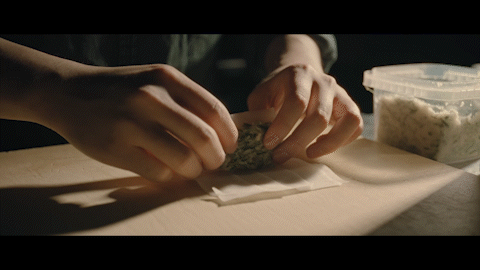
Steam with really low heat for five minutes or until gently cooked through. Dust parcel with scallion powder then place in a warmed bowl.
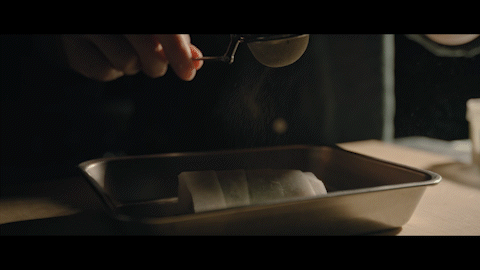
Heat broth with a generous amount of oil in a small pot until just before boiling.
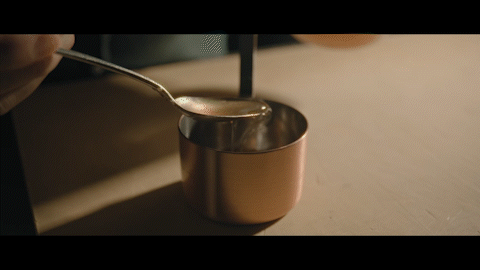
Pour broth tableside.
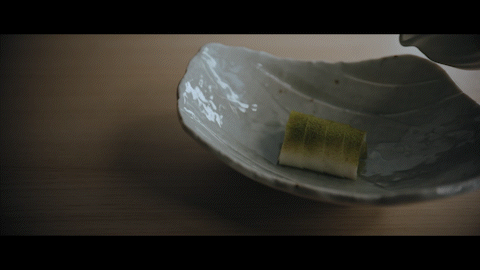


Our comments section is for members only.
Join today to gain exclusive access.